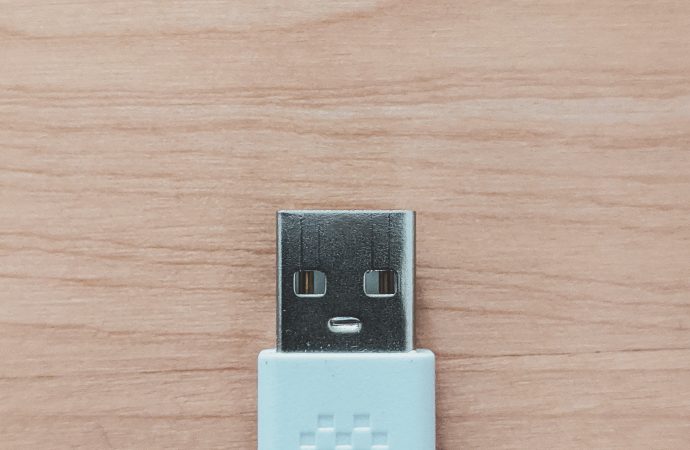Here you’ll find detailed instructions on how to boot your computer from a USB drive. We understand how nerve-racking it can be to try something completely novel and untested. No, there’s no cause for alarm. We’re here to lend a hand however we can. The article will cover the right and wrong ways to make
Here you’ll find detailed instructions on how to boot your computer from a USB drive. We understand how nerve-racking it can be to try something completely novel and untested. No, there’s no cause for alarm. We’re here to lend a hand however we can. The article will cover the right and wrong ways to make a USB drive bootable. Everything you need to know about data security, from the basics to the most cutting-edge techniques, is right here. It’s time to get moving on something.
A “bootable USB drive,” in layman’s terms, is a flash drive capable of booting an operating system.
Read on to find out how to enable your USB drive to boot.
Operating system installation media and a bootable device are both necessities for a fresh OS installation. Both of these can be stored on a CD or a USB drive. In recent years, USB flash drives have become more commonplace than hard drives. In order to make your own Windows 10 installation media, all you need is the Windows 10 ISO file, Microsoft’s Media Creation Tool, and a USB flash drive with at least 4 GB of free space.
Step-by-Step Guide to Making a USB Drive Bootable
Even though there are other ways to create bootable Windows 10 installation discs, the Windows 10 Media Creation Tool is the recommended method. The free program Rufus can also be used to make bootable media for Windows 10. Despite being a vast improvement over Microsoft’s software, Rufus is unable to play dual-layer DVDs. There is no third-party software that can create a bootable dual-layer DVD like Microsoft’s own.
Creating Bootable Media with Rufus
If you want the most recent version of Rufus, go to https://rufus.akeo.ie/ and click the “Download” button.
The process of using the USB drive begins after you have inserted it and launched Rufus.
To make a USB drive bootable, select the drive you want to use and then click the box labeled “Create a bootable disk using.”
Preparing a USB drive to start a computer.
Making a USB drive that can start a computer requires some forethought. First and foremost, you must ensure that your computer has all the required software installed. Make a disk that your computer can start up from with the help of this program.
A USB drive formatting program must be pre-installed on your computer before you can begin the formatting process. It is unacceptable to risk losing data due to forgetfulness, so this is very important. When making a bootable image, the drive must be formatted.
The USB drive urgently requires a copy of the bootable image. Careful, because a wrong move could prevent your computer from booting up.
Quickly get up and running by storing the image on a USB drive. You can now use the USB drive to start your computer normally.
I was wondering if you could recommend an alternative app for me to use.
Only special software allows the creation of bootable USB drives. There are a lot of apps out there that say they can do this, but not all of them are reliable. You have the option of selecting from a range of good and bad, free and paid options.
The free software Rufus can get USB drives ready to boot operating systems. UNetbootin, an open-source alternative to the proprietary Rufus, is safer and more feature-rich.
PowerISO and Nero Burning ROM are two excellent paid options if you don’t mind spending a little money. These applications have become widely used because of their dependability and the numerous helpful features they offer. The best tool for making an ISO image that can be booted is PowerISO.
Verify that the system can read the USB drive. The USB drive it makes won’t be bootable if the settings are wrong.
Preparing a USB drive to start a computer.
Creating a bootable USB drive calls for careful planning. Get started with a solid USB drive. Step two: use the FAT32 file system to format the drive. The third and final step is to use a reliable USB bootable software application. Last but not least, check your BIOS configuration for optimal performance. You shouldn’t put any private information on a USB drive until you’ve given it a thorough test.
The following should be kept in mind while preparing a USB drive to boot a computer:
First, make sure the USB drive you’re going to be using is safe and reliable. Investing in a USB memory stick? Get it from someone you can trust.
When formatting the drive, it’s suggested that you use the FAT32 file system. Most USB-bootable software requires this specific file format in order to run.
- Make use of a reliable USB bootable software utility. There are a plethora of helpful free online tools for formatting a USB drive to be used as the primary boot device in a computer. Choose the method that has been tried and true for a long time.
It is recommended to check the computer’s BIOS to ensure correct settings. The computer’s BIOS needs to be modified for the bootable USB drive to be recognized.
Don’t automatically assume your USB drive is safe to use. Make sure the USB drive is in good working order by running a diagnostics program on it.
Making a USB Drive Bootable: A Step-by-Step Tutorial
Most people lack the technical expertise necessary to make a USB drive bootable. Start by acquiring a USB drive that can boot your computer. The system can use the USB drive as the primary boot device. Whether you’re starting from scratch with a new PC build or restoring an older model, this will be helpful.
Understanding the definition of a bootable USB drive allows us to move on to the steps required to make one. Before you can use the USB drive, it must be formatted. Although there are other options, we advise using HPUSBFW on Windows and Disk Utility on Mac. After formatting the flash drive, any data or drivers that are program- or device-specific should be copied over. The manufacturer’s website should have the appropriate ones for the operating system you’re installing.
After the data has been transferred, boot mode must be enabled before the USB drive can be used. Bootsect is a program that can be used for Windows, while the diskutil command can be used for Mac OS X. After a USB drive is formatted as a bootable device, it can be used to set up a new operating system.
If you want your USB drive to be able to start a computer, you’ll need to include the following:
Conclusion
It’s simple to transfer files and programs between computers if you know how to make a USB drive bootable. By doing so, you increase the reliability of your USB drive. Checking ahead of time that all required software and hardware is present and operating normally can also help prevent installation problems. We have a support staff ready to assist you if you run into any issues.





















Leave a Comment
Your email address will not be published. Required fields are marked with *